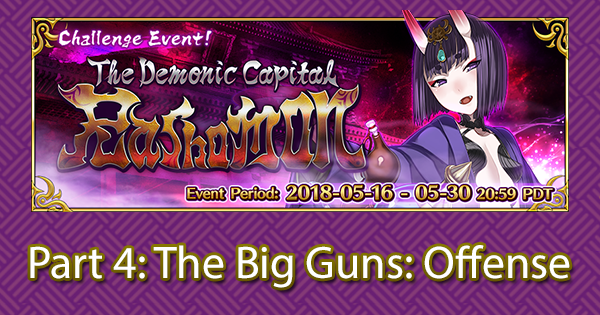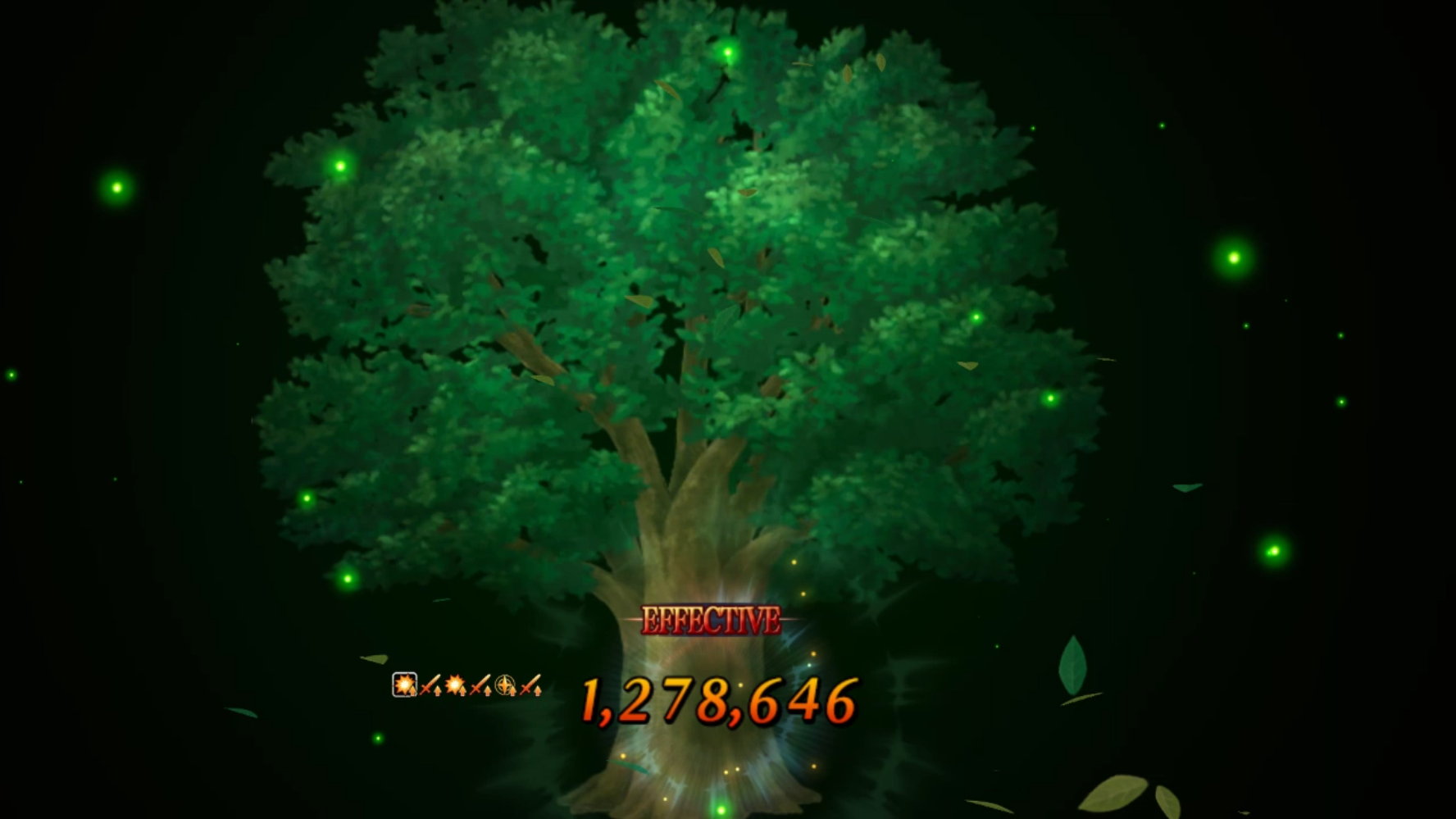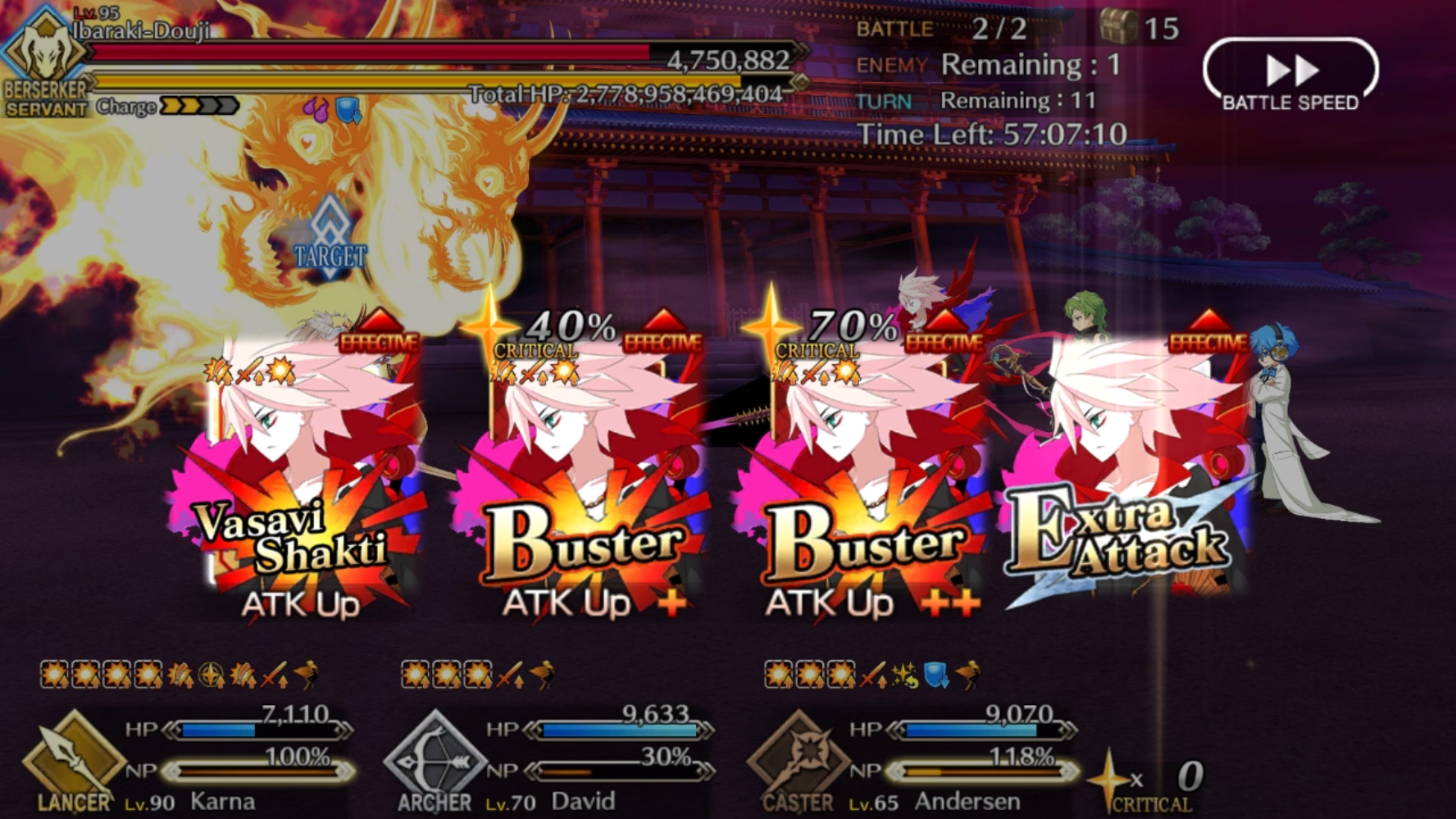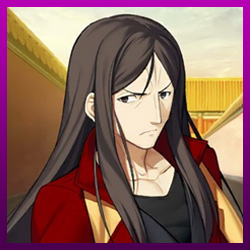
Part 4: The Big Guns: Offense
After setting up a defensive rotation to minimize moments of vulnerability, it is time to focus on getting the most damage out of a team. Much like how defense buffs are rotated, so too can offense buffs be set up for a rotation. Unlike defensive measures however, offense buffs do not need to be constantly active. No, for offense purposes pooling all buffs into a single turn, or a period of 3 turns, and unleashing them all at once will increase damage the most. In other words, it is about setting up windows of burst damage. As different types of offensive buffs amplify the effect of one another, turns in which the amount of offensive buffs on the main DPS Servant are maximized will ensure a tremendous amount of damage.
Part 4.1: Windows of Burst Damage
No matter which Servant has been selected as the main DPS, provide that DPS with as many different types of buffs as possible on the moment that Servant is doing most of their damage. Some Servants rely on their Noble Phantasm to do their damage, some rely on criticals or perhaps a combination of both. Depending on which Servant is active as the main DPS, try to bring the offensive buffs corresponding the most with their damage archetype. Waver and/or Hans are generally safe options for any composition, although Hans works especially with critical-oriented Servants. Meanwhile, fielding Tamamo no Mae requires that a team is geared towards Arts cards. Aside from these, there are plenty of hybrid Servants that have a variety of team offense buffs for the situation at hand.
As alluded to in the introduction of this section, the reason to stack as many buffs all at once is that all offense buffs of different types stack multiplicatively with one another. Therefore, the more kinds of different buffs are stacked together, and the stronger each of these buffs become, then so too will the total amount of damage be higher. Generally speaking, by dealing damage in this manner, it only takes a few windows of burst damage to clear a challenge quest. Unleashing a Noble Phantasm without proper buffs or simply firing off skills one at a time will both result in some pitiful damage numbers in the long run.

Part 4.2: The Burst and Build up
Usually, the best targetable or team-wide offense buffs last for three turns. Essentially, that means you have a window of burst damage in those three turns to try and do as much damage as possible. For some Servants, it may even be possible to fire off a Noble Phantasm twice in those three turn windows. The moment all skills and buffs have worn off is the moment that one goes back to charging up their Noble Phantasms and making sure that their supports can protect the front line. This is another reason why bringing defensive measures is so important because losing a precious DPS Servant while they are still charging up their Noble Phantasms and/or waiting for their skills can be fatal to your run.
Incidentally, this brings up the topic of leveling the skills of DPS Servants. Higher level skills reduce the amount of waiting time before the next window of burst damage while also ensuring that each window does even more damage. Remember that skills receive a cooldown reduction at rank 6 and then again at 10.
Therefore, consider which skills are integral to the servant, skills that provide the most powerful benefits, and level those first. The faster a skill comes off cooldown, the more flexibility a Master has in deploying them and whether to activate them right away or not. While leveling skills, pay careful attention to how long the cooldown is on each skill. For situations in which pooling all buffs is preferable, it is often worth getting buffs with longer cooldowns to skill level 6 or 10 first to activate your windows of burst damage more often.
There are however a few challenge quests where stacking damage buffs isn’t preferable. Sometimes a challenge quest requires pinpoint damage requirements. That is, doing too much damage might result in giving too many actions to the main boss if both minions perish, after which the main boss will wipe out your team with extreme prejudice. Or, the challenge quest might consist of one large wave of enemies with a vast amount of reinforcements. In these cases, a steady performance where the different damage buffs are rotated over a vast amount of turns is better.
Part 4.3: Basic Command Cards
(Note: The Introduction of Skadi has made Quick Servant NP looping as one of the most powerful offensive options - this section thus doesn't age as well as the game progresses)
As skill levels are increased and as enemies become stronger, the relative power of Noble Phantasms becomes much less prominent. Rather, with all those buffs it is the post-Noble Phantasm command cards that rival, if not surpass, the damage that the Noble Phantasms do. Especially buster Servants with a two buster card load-out do a tremendous amount of damage with their Noble Phantasm-Buster-Buster Brave Chain. Often, the Noble Phantasm is simply a platform with which to create a highly damaging Extra chain. For farming nodes it is generally no problem to simply chain a couple of Noble Phantasms together and call it a day. For challenge missions it is a better idea to space them out a bit more . After all, it is much easier to create card-type or Extra chains when there is a Noble Phantasm that is available for selection. At the very least don’t throw out all offense buffs without a good card draw to make use of all the buffs.

For challenge missions (if not always) it is good practice to count command cards. The 15 command cards of the frontline Servants are distributed among three turns of combat. Cards that appear on the first turn cannot appear again until the deck has reset. As a result, it is possible to make educated guesses and/or outright confirm which cards are going to appear on the next draw(s). Ideally, the moment to trigger and abuse the cavalcade of buffs is when there are still good cards left for the main DPS to draw on. Do note that the death of a Servant reshuffles the deck and requires starting up a new count. That is another reason to keep Servants alive or send them to their death, if a reshuffle is in order. For players unfamiliar to counting command cards, try practicing during straightforward farming nodes with the Mage Association Uniform and then apply the lessons learned during challenge quests.
Part 4.4: Card Synergy
As mentioned in part 2, what is crucial in terms of offense for challenge quests is that the nature of the support buffs aligns with the card set of the main DPS Servant. Bringing a Tamamo no Mae for Jeanne Alter needlessly complicates things. As almost all support Servants have an Arts set-up, it is not difficult to have the different supports synergize with one another. Usually the various buffs provided by these supports are enough for the main DPS Servant to do their job and charge their Noble Phantasm in time for the next window of burst damage.
However, if the intention is to play with a hybrid or a second DPS, care must be taken during Servant selection. At the very least, ensure that these two Servants have somewhat similar card structures and are suited to the same type of buffs that come from your support. This will make it easier to form card chains that benefit the player as well as provide the strategic option to switch the main DPS if the situation calls for it. If the hybrid or second DPS draws a good set of cards, adjusting is much easier as the right support buffs will already be in place. At this stage, more intricate interactions such as critical star weight should be considered as well. Fielding a Rider Servant alongside an Avenger will make pooling critical stars to the Avenger much more difficult.
Part 4.5: In Conclusion
In order to extract the most damage out of a team, consider the following:
- For the majority of challenge quests, create windows of bursts damage.
- Select at least one support or hybrid that synergizes with the core strength of the main DPS Servant.
- Different buff types multiply with one another and increase damage significantly.
- Higher skill levels strengthen, and reduce the waiting period between, windows of burst damage.
- Not all challenge quests require high damage output and may ask for a more gradual use of skills.
- Depending on the Servant, a Noble Phantasm’s main effect is as important as using the Noble Phantasm as part of an Extra chain.
- Whenever possible, try to count what cards can still be drawn from the deck and buff accordingly.
- Bring buffs and Servants that broadly benefit from or enhance the same card chains.















